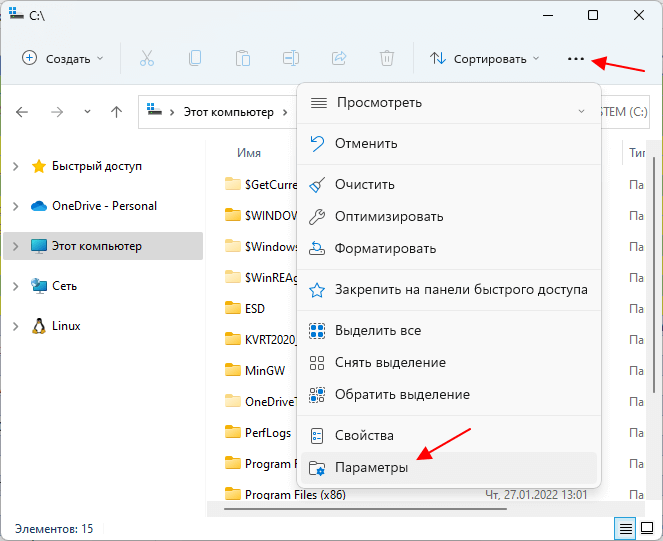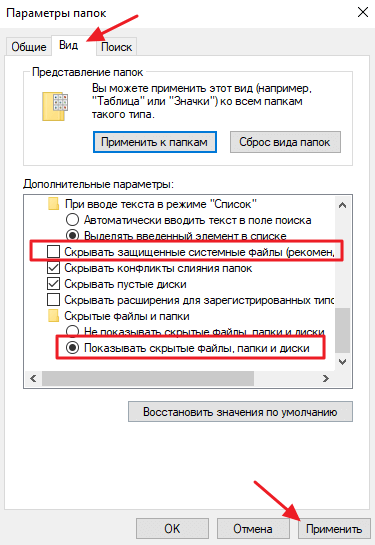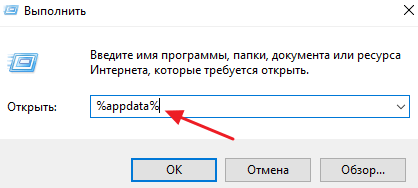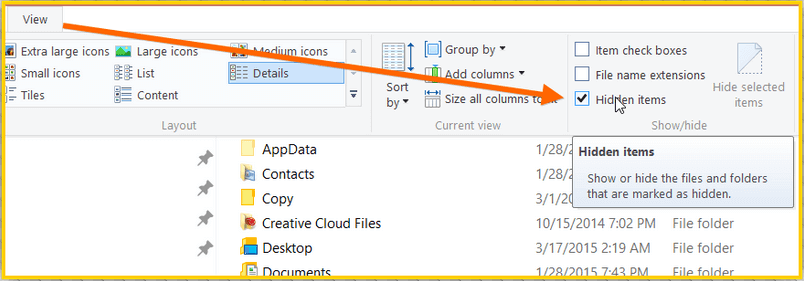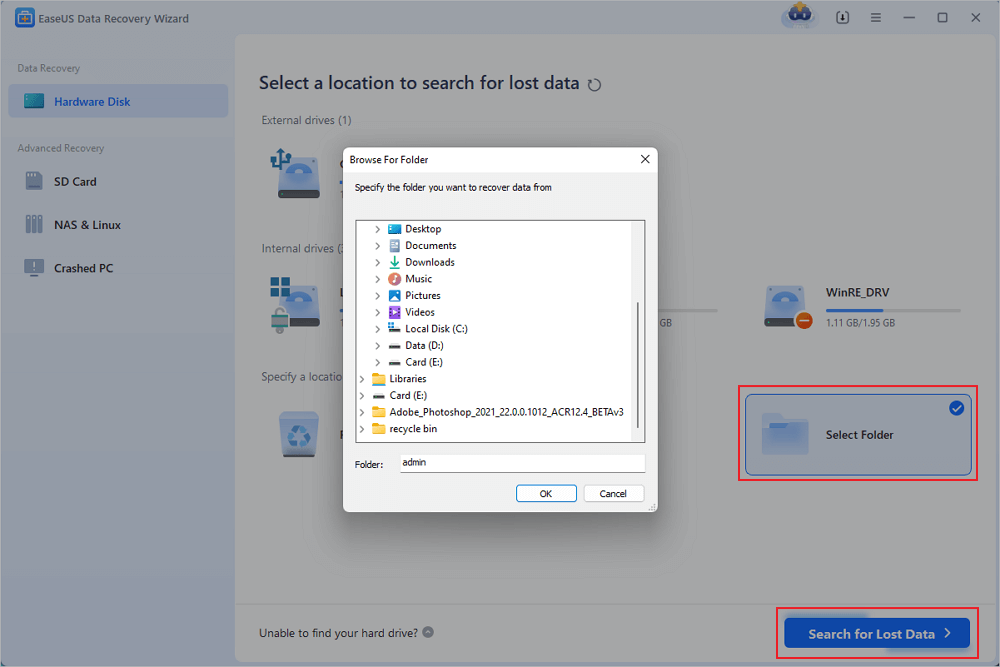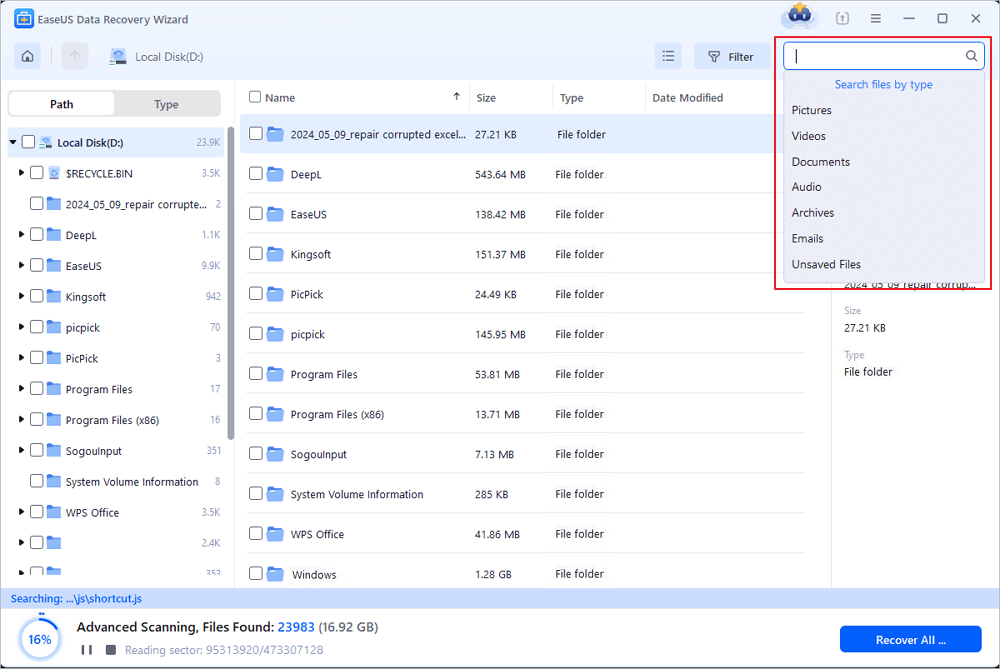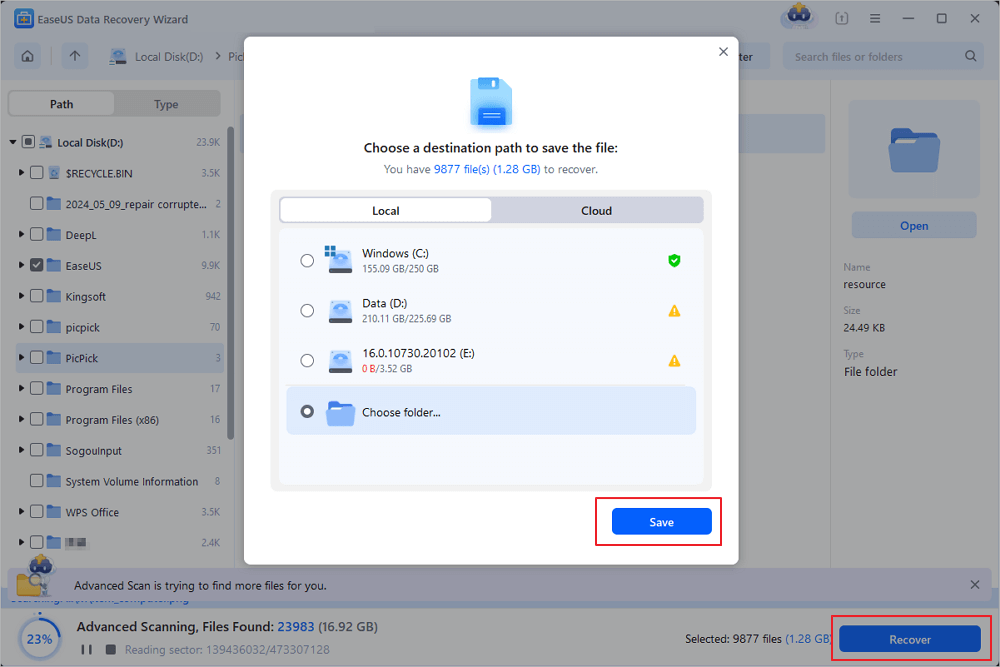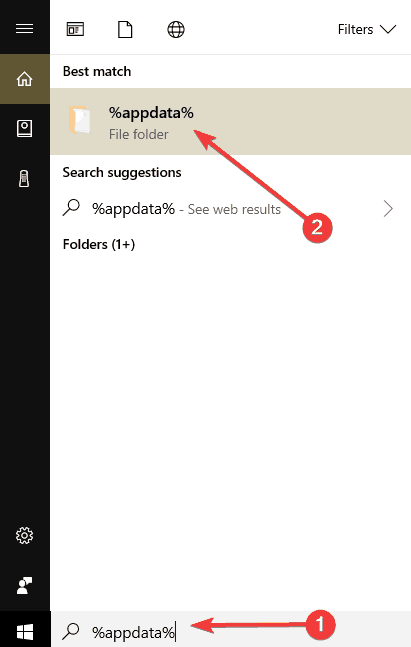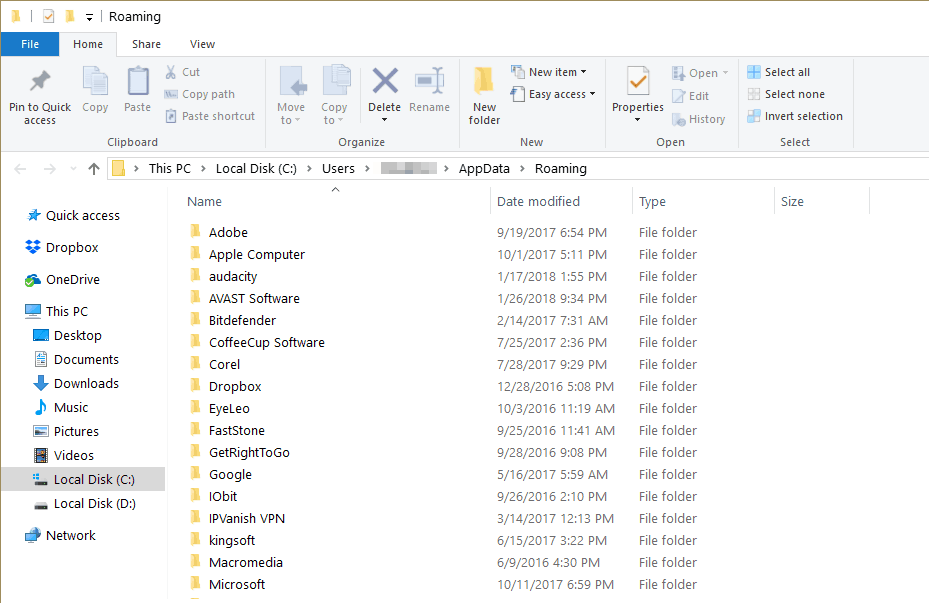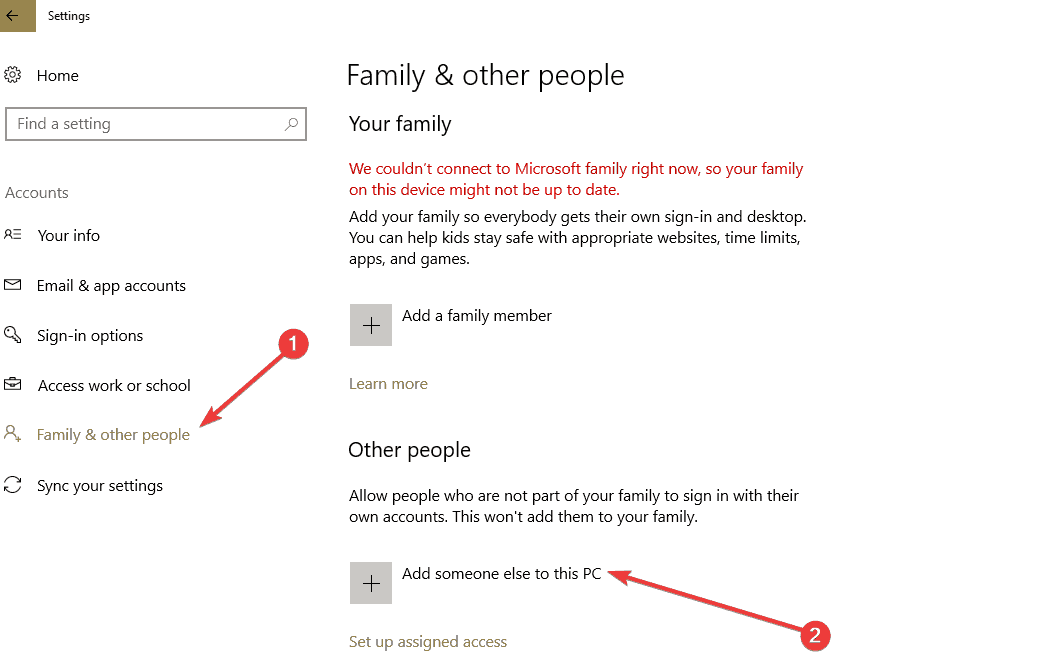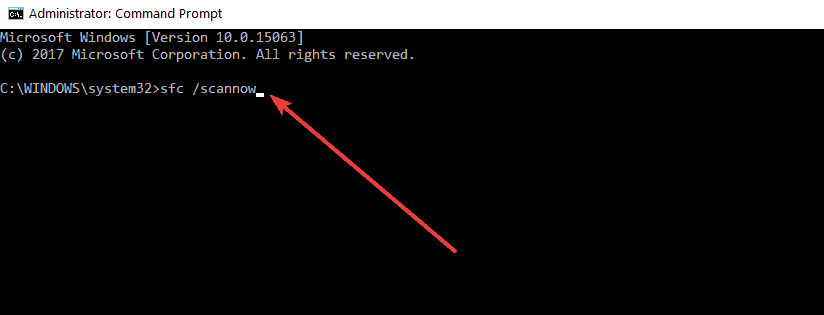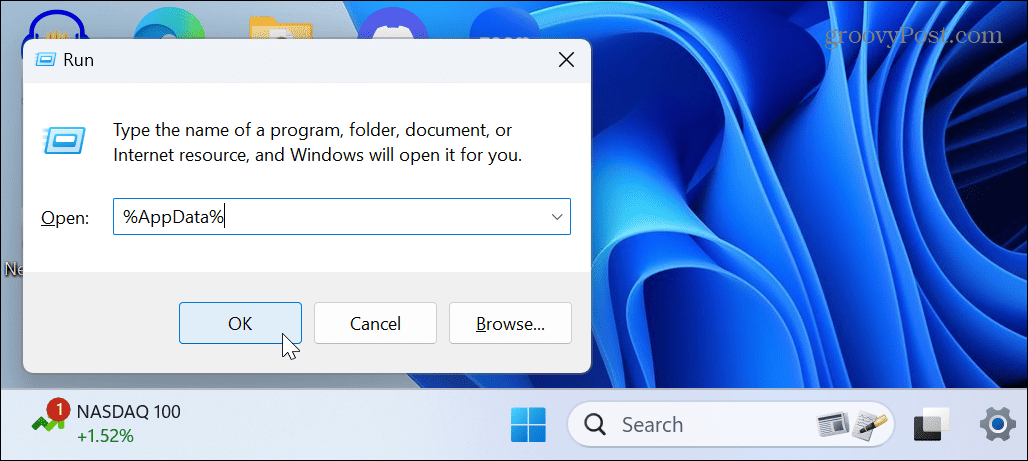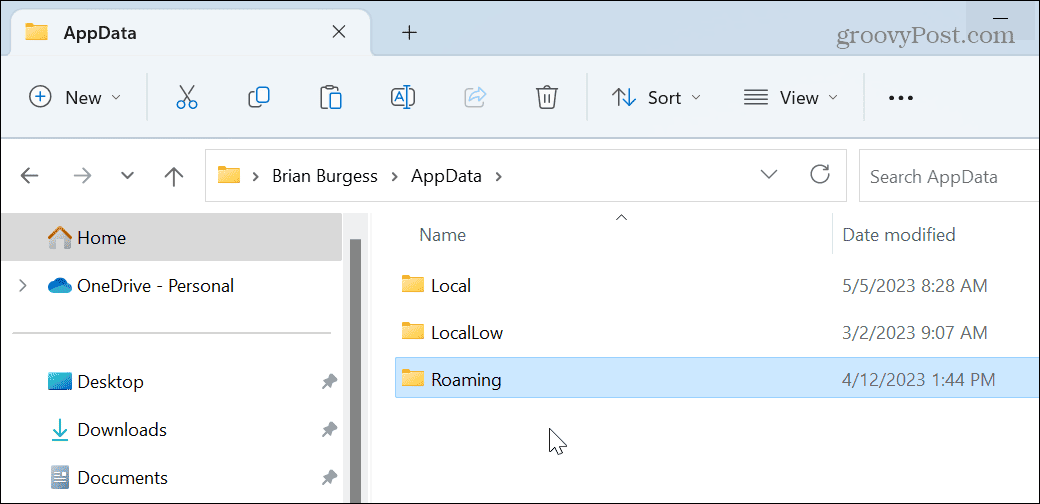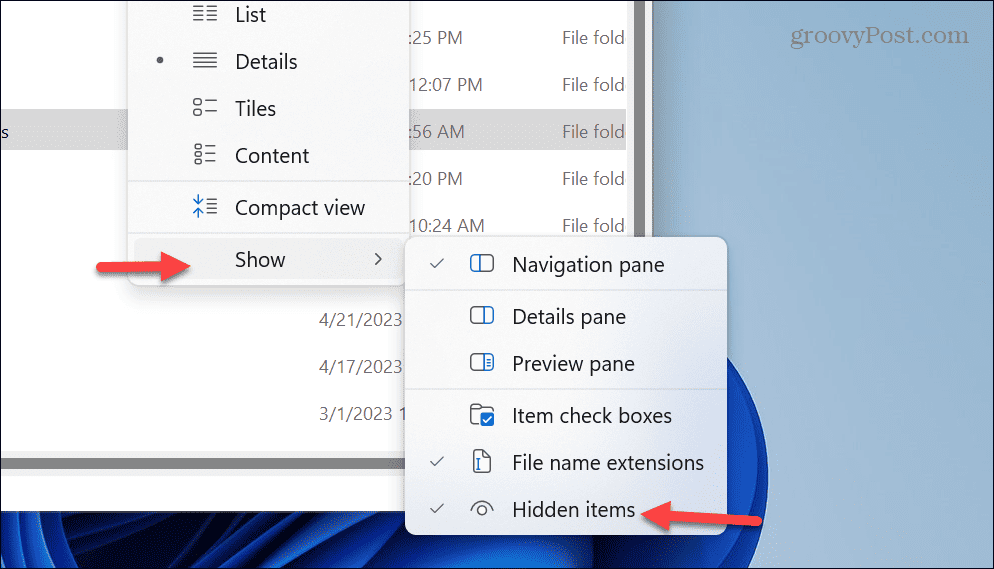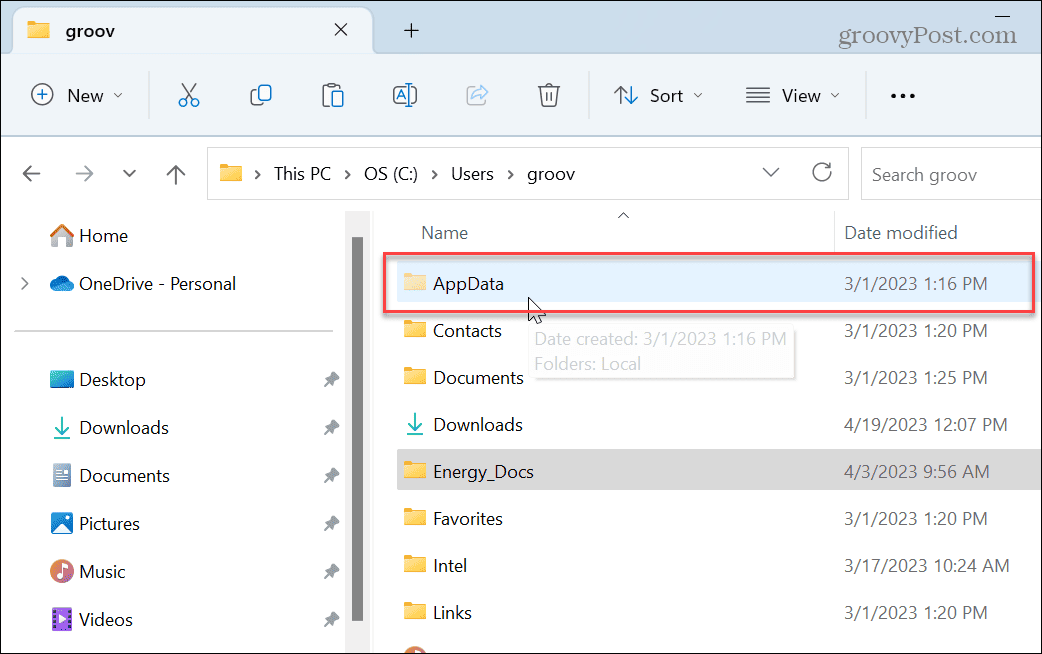При настройке или переносе некоторых программ вам может понадобиться доступ к папке AppData, которая расположена на системном диске Windows 11 и Windows 10. В этой небольшой статье мы расскажем, для чего нужна папка AppData, где она находится, а также как ее найти и открыть.
AppData: что это за папка?
Папка AppData была впервые появилась в Windows Vista и с тех пор присутствует во всех версиях операционной системы Windows, включая Windows 10 и Windows 11. Название папки является сокращением от английской фразы Application Data, что можно перевести на русский как «Данные приложений». Как можно догадаться, эта папка предназначена для хранения данных различных программ, установленных в операционной системе Windows. Например, в папке AppData хранятся профили таких программ как Firefox, Thunderbird и старых версий Outlook.
Внутри папки AppData находится еще подпапки, это Local, LocalLow и Roaming. Каждая из этих папок выполняет свои функции и используется разными программами.
- Папка Roaming используется хранения для наиболее важных данных, которые будут перемещаться вместе с учетной записью пользователя с одного компьютера на другой, в том случае если ваш компьютер будет подключен к домену с перемещаемым профилем. Например, в папке Roaming веб-браузер Firefox хранит профили пользователей, закладки, историю и т. д.
- В папке Local хранятся данные, которые относятся исключительно к текущему компьютеру. Эта папка никогда не перемещается с компьютера на компьютер, даже при входе в домен. Как правило, это слишком большие для переноса файлы, загруженные файлы кэш, а также файлы, которые, по мнению разработчика программы, не должны перемещаться между компьютерами.
- Папка LocalLow является аналогом папки Local, но используется для приложений, которые работают с более ограниченными настройками безопасности. Например, при запуске веб-браузера Internet Explorer в защищенном режиме у него будет доступ только к папке LocalLow.
Нужно отметить, что если вы не подключаетесь к домену, то для вас нет никакой разницы между папками Local, Roaming и LocalLow. Так как данные все равно хранятся исключительно на вашем компьютере.
Где находится папка AppData
В Windows 11 и Windows 10 папка AppData расположена по адресу «C:\Users\UserName\AppData», где UserName – это имя пользователя. Чтобы найти эту папку на системном диске нужно включить отображение скрытых и системных файлов.
В Windows 10 для этого откройте системный диск, перейдите на вкладку «Вид» и нажмите на кнопку «Параметры».
В Windows 11 откройте системный диск, нажмите на кнопку с тремя точками и выберите «Параметры».
В результате откроется окно «Параметры папок». Здесь нужно снова перейти на вкладку «Вид», пролистать список параметров в самый конец и включить отображение скрытых и системных файлов. Для этого нужно снять отметку напротив пункта «Скрывать защищенные системные файлы» и установить напротив «Показывать скрытые файлы, папки и диски».
После этого нужно сохранить настройки и перейти в папку «Users» или «Пользователи», открыть папку пользователя и открыть AppData.
Но, это не единственный способ открытия папки AppData. Если знать некоторые хитрости, то доступ к AppData можно получить буквально за пару кликов.
Как открыть папку AppData
Наиболее простой способ открытия папки AppData – это меню «Выполнить». Чтобы воспользоваться этим способом нужно нажать комбинацию клавиш Win-R и в открывшемся меню ввести команду %appdata%.
После выполнения данной команды перед вами появится папка AppData\Roaming. Из которой вы сможете перейти на один уровень выше и попасть в AppData.
Также с помощью команды можно перейти в AppData\Local. Для этого нужно использовать команду %localappdata%.
Посмотрите также:
- Как изменить расширение файла в Windows 7
- Как открыть скрытую папку в Windows 7
- Как передать файл большого размера через Интернет
- Как найти и открыть папку AppData в Windows 7
- Inetpub: что это за папка в Windows 10
Автор
Александр Степушин
Создатель сайта comp-security.net, автор более 2000 статей о ремонте компьютеров, работе с программами, настройке операционных систем.
Остались вопросы?
Задайте вопрос в комментариях под статьей или на странице
«Задать вопрос»
и вы обязательно получите ответ.
There is no AppData folder, how to find it?
«It is said that downloaded application files are stored in a folder called AppData that resides in C:/Users. However, when I open the Users folder, only find Documents, Music, Pictures, Videos, Downloads except for AppData. Is the AppData folder missing?»
How to restore AppData folder Windows 10?
«Lost Users folder along with AppData folder in C drive after reinstalling Windows 10, can I restore the missing AppData folder as a whole so that I won’t take much time to re-download those frequently used applications?»
AppData folder resides in Users folder in C drive but was set as unseen by default. If the folder is missing, but you never removed it before, then it’s easy to unhide it and find your application files without making a fuss. While if the AppData is deleted or lost, you need to use EaseUS Data Recovery Wizard to help you out.
How to Unhide AppData in Windows 10/11
1. Browse to your main drive where Windows installed, e.g., C:
2. Go to C:\Users\username\
3. Next, click the «View» tab at the very top and tick «Hidden items» option. It will present all folders, including the AppData folder.
How to Restore Deleted AppData Folder in Windows 10/11
What if the AppData folder is not hidden but was deleted? This happens when people are trying to free up C drive space. Fortunately, it’s possible to bring lost AppData back by employing reliable Windows EaseUS Data Recovery Wizard — EaseUS Data Recovery Wizard. Being similar with the method to recover lost/hidden Users folder in C drive, let’s learn in details for deleted AppData folder recovery.
Steps for AppData folder recovery in Windows 10 with EaseUS Data Recovery Wizard
Step 1. Select a folder to scan for lost files
Launch EaseUS Data Recovery Wizard. Choose «Select Folder» under Specify a location. Click «Browse» to choose the location where you lost the folder and click «OK» to scan the lost folder.
Step 2. Find and preview found files in the lost folder
If you remember the folder name, type the folder name in search box to quickly find the lost files. Then, open the found folder and double-click to preview scanned files. Or you can use the Filter feature to find a certain type of files.
Step 3. Recover and save the lost folder
Last, select the folder and files you need, click «Recover» and choose a new & secure location on your PC to keep the recovered data.

The AppData folder on your PC can be termed the centralized location to save application data. Files like temporary files, log files, user settings, bookmarks, etc., are stored safely in the AppData folder. Therefore, removing the AppData folder means all the saved settings and progress is lost.
However, users often unintentionally or unknowingly delete the folder to clear space and lose all the user data. If you, too, can’t find the AppData folder on your PC and want to restore it, this blog will help you. Here we will explore both the inbuilt and third-party options you can use to recover the AppData folder.
Without further ado, let’s jump right into it!
Top Ways to Find & Restore Missing AppData Folder in Windows
The AppData folder is often hidden to keep it safe from alterations. The folder is saved in the Users folder in your system drive. If you do not find it, don’t panic. There are multiple ways to navigate the AppData folder.
1. Unhide the AppData Folder to Access
The first thing you can do is unhide the folder so that you can find the folder and make changes as per your wish. It is simple; all you have to do is –
- Open Windows Explorer and Navigate to C drive ( or the drive on which you have Windows installed)
- In the drive, look for the Users folder.
- Open the Users folder and then enter the admin folder. It might also be named after your user profile, so choose that folder.
- In the folder, you may find AppData. However, if you can not, it might be hidden. To unhide the folder, follow the given instructions.
- In the top panel, click on View→ Show → Hidden items.
This way, you can unhide the AppData folder and do the needful. Keep in mind that making changes to the files in the folder may result in inevitable app crashes.
Therefore, it is advised that you use the folder carefully. It is also the reason why the AppData folder is hidden by default.
2. Open the Folder Using Run
If you feel unhiding a folder after navigating through multiple folders is a lot of tasks. Or you have multiple users and need help finding the folder, you can use Run a search. Here’s how –
- Press Windows + R to bring up the Run search box.
- In the search box, enter %Appdata% and click OK.
- This will open a folder that has roaming app data.
- Use Windows Explorer to navigate a folder down, and you will reach the AppData folder.
- Click on the AppData folder in the address bar to access the folder.
3. Restore Missing AppData Folder with Advanced Disk Recovery
In case both the above ways do not work for you, and you have deleted a few files from the Windows Drive, chances are that you have unknowingly deleted the AppData folder.
Don’t worry, as there is still a way you can restore the folder. Advanced Disk Recovery tool offers data recovery options for all sorts of deleted or formatted files, making restoring any folder a cakewalk.
The tool is super easy to use; all you have to do is –
Install the application on your PC. You can find the download button below.
Choose the drive you want to scan. It is the drive on which you want to recover the data. Since we are working on the AppData folder, it should be the Windows Drive, i.e., C drive.
Click on Start Scan Now and choose the type of scan you want to perform. Ensure you read the description under every scan, as it can help you choose better.
Choose the scan type and click on Scan now. This will initiate a complete scan of your hard drive for deleted data.
Once the Scan is over, you get a list of files and folders deleted from your system. Find the AppData folder, mark it and click on recover.
Once you click on recover, Explorer will ask you to choose a destination to save the recovered file. Choose the folder you desire.
Click on OK to finish the process.
Close the tool and check whether the AppData folder is available now or not. You can simply copy the log files into the new folder to restore your settings and user files.
Conclusion
Advanced Disk Recovery is the easiest and most efficient way to restore a missing AppData folder in your PC. In case the folder was just hidden, or you were unable to find it, the first two techniques can help you out, and if you have mistakenly deleted the folder, the latter can assist.
Either way, I hope this blog can resolve your issues related to the AppData folder. Leave a line in the comments section about how the blog assisted you. Good luck!
Recommended-
How to Restore System Files on Windows 10
How To Fix – System Restore Not Working In Windows 10
How To See And Restore Deleted Hidden Photos
How To Backup & Restore Windows 10 System Files
Apply our detailed procedures with no hesitation
by Ivan Jenic
Passionate about all elements related to Windows and combined with his innate curiosity, Ivan has delved deep into understanding this operating system, with a specialization in drivers and… read more
Updated on
- Windows systems are predisposed to system errors that sometimes prevent them from running properly yet we are here to help.
- One solution to your current issue is to hide file extensions. Use the steps below in this regard.
Is your Appdata /LocalLow missing from your PC? If it is, this tutorial will help you fix Appdata/LocalLow missing in Windows 10. The solutions listed below apply even if you moved the respective folders by mistake or they simply disappeared from the system.
The Appdata folder, as well as the LocalLow folder, should remain in your system directory. So, if by any chance you moved the folders or they got deleted from your Windows 10 system, this will trigger a lot of errors when you try to access them.
These two folders also contain the program settings feature in the Internet Explorer Cookies, settings, and browsing history, and also the temporary files created by your installed applications.
How we test, review and rate?
We have worked for the past 6 months on building a new review system on how we produce content. Using it, we have subsequently redone most of our articles to provide actual hands-on expertise on the guides we made.
For more details you can read how we test, review, and rate at WindowsReport.
Before following these instructions, it is recommended that you create a backup copy of your personal files, such as the music folders, movie folders, emails, and any other important documents you might have on your current system.
What to do if Windows can’t find Appdata folder/LocalLow?
1. Locate the Appdata/LocalLow folder
Another point to keep in mind is that this folder is hidden. So, if you are trying to access it normally, you will probably not see it in the system. Just to make sure the folders are indeed missing, follow the instructions below, and let’s see if you can find them:
- Go to Start > type %appdata% without the quotes, of course
- Select the folder that appears as the first result (it should take you to the Roaming folder).
- If it takes you to the following path: “C:Users[The user that you are logged in with]AppDataRoaming” then it means that your folders are still there but they are hidden.
- Click on the AppData in the Explorer path on the upper side of the screen and check if you have a LocalLow folder there as well.
- If it doesn’t take you to the path specified above, follow the instructions below.
2. Recover the Appdata/LocalLow folder by using a restore point
- Go to Start > type Control Panel without the quotes.
- After the search is finished, click on the Control Panel icon.
- From the upper side in the Control Panel window, select the Search box > write Recovery.
- Press the Enter button on the keyboard.
- Select the Open system restore feature.
- Now you need to follow the on-screen instructions and get your operating system back to a point in time when the folders were not missing, and you will have disappeared folders available.
- How to Properly Fix a PC That’s Not Turning on [12 ways]
- Security Settings Blocked Self-signed Application [Fix]
- 10 Common Computer Problems & How to Properly Fix Them
3. Hide extensions in File Explorer
If you still can’t locate the Appdata/LocalLow folders, try changing your File Explorer Settings.
Disabling the options Hide extensions for known file type and Hide protected Operating System files may help you fix the problem.
Here are the steps to follow:
- Click on Start button > type File Explorer Options > double-click on the first result
- Select the View tab > scroll down and locate these two options:
- Hide extensions for known file type
- Hide protected Operating System files
- Remove the checkmark for both options > hit Apply > OK.
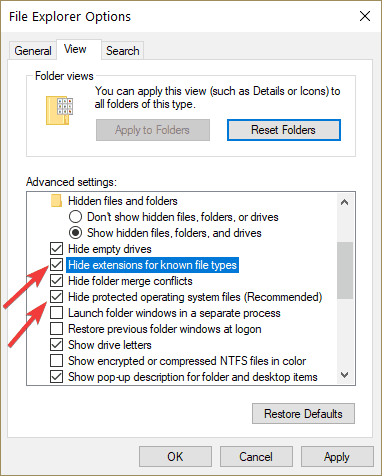
4. Create a new user account
- Go to Start > select Settings > Accounts > Family & other people > Add someone else to this PC.
- Enter a user name, password as well as password hint > select Next.
- Follow the on-screen instructions to complete the process.
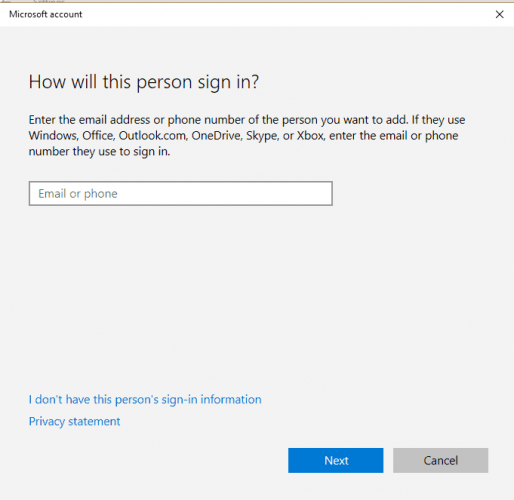
5. Run SFC scan
- Go to Start > type cmd > right-click on Command Prompt > select Run as administrator
- Run the sfc /scannow command > hit Enter
- Wait until the scanning process completes and then restart your computer.
Make sure that this problem is not caused by corrupted or missing system files. This is why we’ve run a System File Checker scan to quickly detect and fix such problems.
So there you have it, 5 ways to bring back your Appdata/LocalLow folder in Windows 10 in just a few minutes of your time. Also, if you encounter any particular trouble along the way, drop us a line in the comments below, and we will help you further.
Next, select the View tab and, in Advanced settings, select Show hidden files, folders, and drives and click OK.
The apps you install on Windows store much of their data in the AppData folder. You rarely need to access it, but we’ll show you how in this guide.
Having access to the AppData folder on Windows is important in different scenarios. However, the folder is hidden by default, and you might not know how to locate the AppData folder on Windows 11.
Each user account on your system has an AppData folder with content like custom setting files and other unique data for apps. It also includes the Local, LocalLow, and Roaming subfolders.
Each folder includes different data for apps like your browser, email client, and other installed software. While troubleshooting or backing up your app and game settings, you may need to access AppData.
What is the AppData Folder?
Microsoft introduced the AppData (short for Application Data) folder with Windows Vista, and it has been in every version since. The hidden folder contains data your system application needs to run.
The folder includes three subfolders and stores most of your app data, such as your browser’s bookmarks and cache, saved sessions, gaming settings, and more. You won’t need to access the folder very often, but you might need to when you’re trying to troubleshoot an app or backup specific settings.
The Local folder includes files for the current PC and is not synced with other systems. LocalLow is similar to Local but includes low-integrity apps with restricted Window security settings like temp files.
Finally, the Roaming folder contains critical app files—these are the files and folders an app needs to run. This data will “roam” from PC to PC with your user account. For example, your Spotify settings or Mozilla Firefox profile data roams with you from device to device.
Unless you’ve completely reconfigured your system, the folder is located in C:\Users\<username>\AppData (replace <username> with your user account folder). You can navigate to the folder manually, but it’s difficult to find to an untrained eye.
So, if you’re required to access something in your AppData folder, we’ll show you some simple ways to get to it.
How to Open the AppData Folder Using Run
Since the folder is hidden, it’s challenging to get to unless you make Windows show hidden files or open it directly. So, for example, you can access it easily from the Run dialog using a few keystrokes and a basic command.
To find the AppData folder from Run:
- Press Windows key + R to launch the Run dialog window.
- Type in the following and click OK or press Enter:
%AppData%
- File Explorer will launch to the Roaming subfolder. Note that a lot of your installed application’s data is stored here, so if you don’t have a backup, know that it is not meant to be deleted.
- Click AppData in the File Explorer address bar to show all three subfolders in the AppData location.
How to Unhide AppData and Use File Explorer
The AppData folder is vital to the apps you install on Windows. To protect these files, Windows hides the AppData folder by default to prevent unnecessary tampering. If you need to find it, you can unhide the folder and see it with File Explorer.
For instance, if you manually navigate to C:\Users\<username>, you won’t see the AppData folder, and you’ll need to unhide the folder to see it.
To unhide AppData on Windows 11:
- Press Windows key + E to launch an instance of File Explorer.
- Click View from the top toolbar.
- Select Show > Hidden items when the menu appears.
- Navigate to C:\Users\<username>\ and you will see the AppData folder. Replace <username> with the correct folder for your user account. Note that it will be a bit transparent, indicating a hidden item in File Explorer.
Manage AppData and Other Folders from File Explorer
Whether you are troubleshooting an app or backing up your favorite game’s settings, the AppData data is essential. But remember, the files in AppData are crucial for applications to work. So, if you’re not an experienced user, it’s best to leave it and its subfolders hidden.
Of course, there are other ways to manage files and folders on Windows. For example, for improved file management, learn about File Explorer Tabs. Or, perhaps you prefer File Explorer to open to This PC instead of Quick Access.
To make items stored in OneDrive more accessible, you can open File Explorer to OneDrive. And sometimes, you may experience problems with files and folder management and need to fix File Explorer not working.

